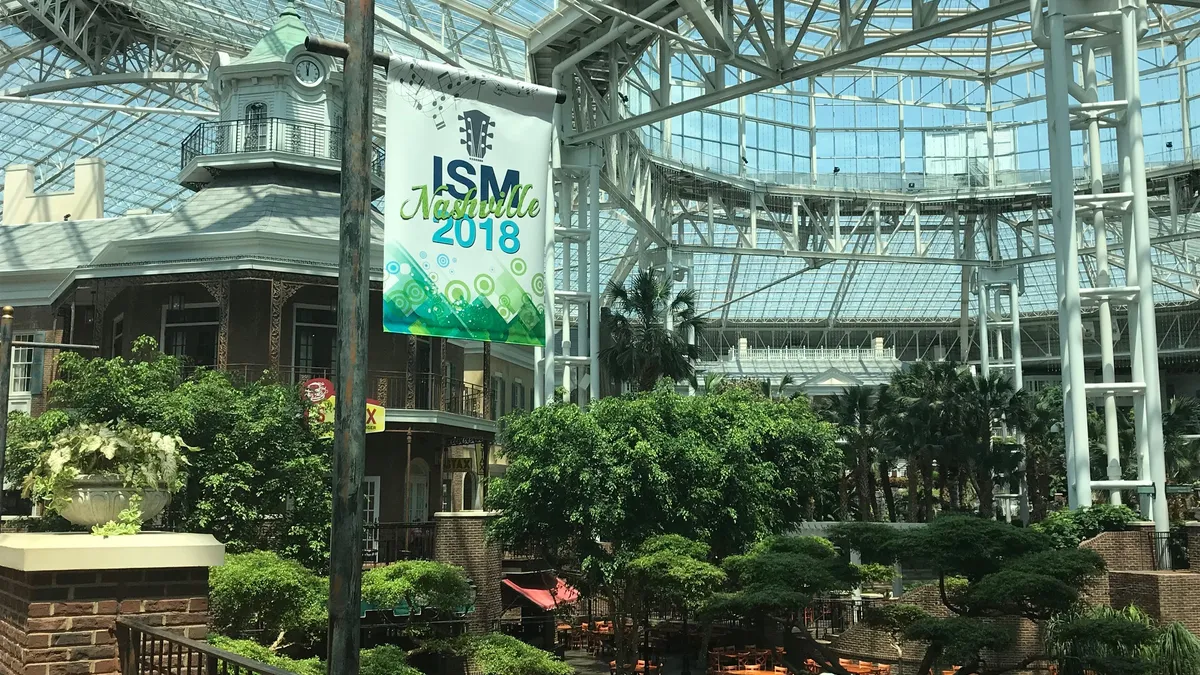A few miles northeast of downtown Nashville, where honky-tonk bars and shops filled with rhinestone-studded boots line the streets, sits the Gaylord Opryland Resort, host of this year’s Institute for Supply Management (ISM) conference.
Attendees ranged from ambitious rising procurement stars, part of ISM and Thomas' 30 under 30 program, to seasoned professionals with decades of experience in supply management.
Here are the biggest takeaways from this year’s conference:
1. Procurement needs more technology, but people need less of it
Of the more than 75 sessions during ISM’s multi-day conference, at least half focused on technology. "AI for Strategic Sourcing," "Blockchain and Supply Management" and "Rise of the Machines" were just a few of the events where speakers outlined technologies that can help improve the procurement process.
While automated payments and visibility through blockchain can help the sourcing functions, they may also help procurement professionals disconnect from overloads of technology.
"I hear people say 'ok, I have to go do email.' Your job is not email," Paul Blake, associate director for GEP, told attendees. He jokingly followed up, "I’m really sorry if I offended anyone whose job really is email."
Technology's role is often to streamline processes, making them faster and more efficient. If payments are automated, for example, CPOs will (hopefully) have fewer emails of payment and invoices to exchange.
Arianna Huffington’s message was similar during her keynote speech on Monday. When so much attention goes toward technology, we lose important soft skills that can differentiate businesses: creativity and empathy.
When ISM CEO Tom Derry asked for her prediction on the next big breakthrough, Huffington’s response was a technology that helps us disconnect from technologies.
Maybe there will be an app for that.
2. Sourcing raw materials can make or break the supply chain
M&M's, Snickers and Dove chocolate have a few things in common — they're all owned by parent company Mars, they're all delicious and they all use chocolate as a staple ingredient.
So if chocolate were in short supply, that would pose a big problem to these brands.
That's why Director of Corporate Risk for Mars Chris de Wolfe said the chocolate giant works to make sure cocoa farming continues to be lucrative for families who work on and own the farms. If the families turn to a more profitable business, Mars could lose a supplier — and that means decreased supply of a critical ingredient for its products.
Mars provides training programs and fertilizers to cocoa farmers, which can help farmers triple their yields. More yields provide more cocoa and more money, which keeps farmers, Mars and chocolate consumers happy.
And it’s not just chocolate – any raw food material can create uncertainty in the supply chain.
At restaurant chain P.F. Chang’s, "fresh chicken drives our supply chain," said CPO Steve Miller. The chain works with distributor U.S. Foods to ensure an adequate quantity of chickens are delivered safely and on-time to its 200-plus locations across the country.
For many restaurant chains, the popular poultry is a central part of the menu, and any shortage or recall would result in major problems.
Just look at KFC’s recent fiasco, when some of its restaurants in the U.K. ran out of a pretty key ingredient (chicken). While the fast food chain has largely recovered and once again can serve chicken, the supply chain snafu didn’t come without a cost.
3. Disruptions are inevitable, but good strategies can soften the blow
When Hurricanes Harvey, Irma and Maria all hit parts of the U.S. within weeks of each other, the damage was severe, and supply chains nationwide went into crisis mode.
For Southwest Airlines, the storms posed a challenge to its fuel supply chain, getting jet fuel from well to wing, said John Briere, senior manager of fuel supply chain management at Southwest Airlines.
When Harvey made landfall, it was a “worst case scenario” Briere said. Fuel supply coming through pipelines was cut off not only in Texas, but all the way up to Missouri and North Carolina. Roads were impassable due to flooding, which meant tanker trucks couldn’t get to the airport.
But long before the storms were even on the radar, the airline had developed fuel contingency plans, with detailed information on every fuel facility and its capacity. Southwest tested its plans through tabletop scenarios.
With thorough and tested plans in place, the airline was "able to minimize a lot of the disruptions" resulting from Harvey, Briere said. The airline’s response time to return to normal operations was just 11 days.
4. The future of procurement is unclear
There were mixed feelings on what the future of procurement will look like.
"I don’t think there will be a CPO in the future," said Chae-Ung Um, corporate senior vice president of global procurement strategy at LG Electronics. He told a media roundtable that the role of Chief Value Officer would take the lead instead.
Others went as far to say a “lights out” approach would eventually dominate procurement, where most processes are fully automated and require no human labor.
That doesn’t necessarily mean the role of procurement professionals disappears, however.
"A bot is not going to manage the supplier relationships," Stacey Taylor, senior vice president and chief procurement officer of MGM Resorts International, told the roundtable.





















